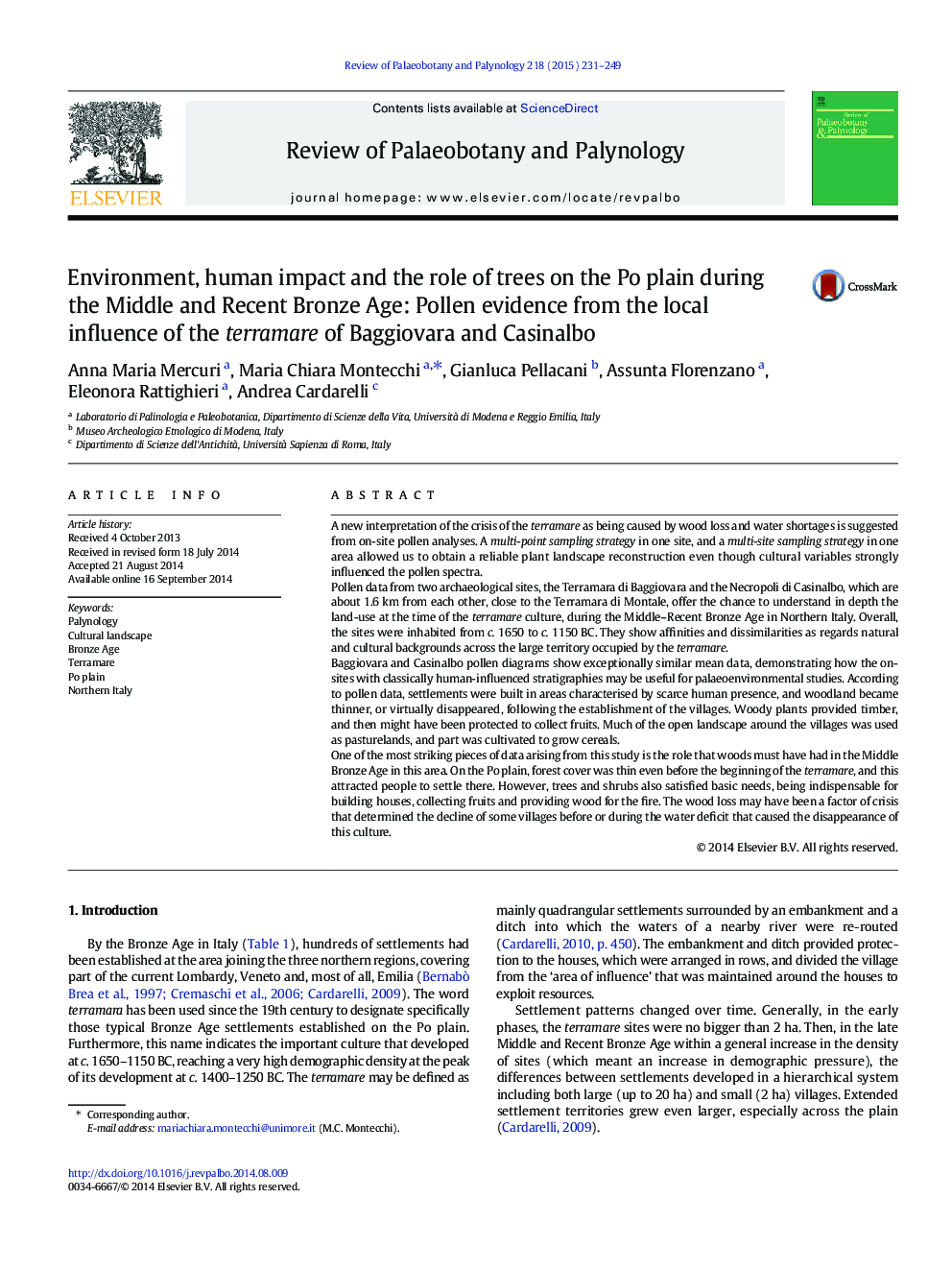| Article ID | Journal | Published Year | Pages | File Type |
|---|---|---|---|---|
| 4750193 | Review of Palaeobotany and Palynology | 2015 | 19 Pages |
•Pollen from on-site layers provides data for detailed palaeoenvironmental reconstructions.•Multi-point sampling is adopted in addition to multi-site sampling strategy.•The Bronze Age was a key period for the development of cultural landscape on the Po plain.•Trees – as both single specimens and woods – played a critical role in the subsistence of the terramare.
A new interpretation of the crisis of the terramare as being caused by wood loss and water shortages is suggested from on-site pollen analyses. A multi-point sampling strategy in one site, and a multi-site sampling strategy in one area allowed us to obtain a reliable plant landscape reconstruction even though cultural variables strongly influenced the pollen spectra.Pollen data from two archaeological sites, the Terramara di Baggiovara and the Necropoli di Casinalbo, which are about 1.6 km from each other, close to the Terramara di Montale, offer the chance to understand in depth the land-use at the time of the terramare culture, during the Middle–Recent Bronze Age in Northern Italy. Overall, the sites were inhabited from c. 1650 to c. 1150 BC. They show affinities and dissimilarities as regards natural and cultural backgrounds across the large territory occupied by the terramare.Baggiovara and Casinalbo pollen diagrams show exceptionally similar mean data, demonstrating how the on-sites with classically human-influenced stratigraphies may be useful for palaeoenvironmental studies. According to pollen data, settlements were built in areas characterised by scarce human presence, and woodland became thinner, or virtually disappeared, following the establishment of the villages. Woody plants provided timber, and then might have been protected to collect fruits. Much of the open landscape around the villages was used as pasturelands, and part was cultivated to grow cereals.One of the most striking pieces of data arising from this study is the role that woods must have had in the Middle Bronze Age in this area. On the Po plain, forest cover was thin even before the beginning of the terramare, and this attracted people to settle there. However, trees and shrubs also satisfied basic needs, being indispensable for building houses, collecting fruits and providing wood for the fire. The wood loss may have been a factor of crisis that determined the decline of some villages before or during the water deficit that caused the disappearance of this culture.
